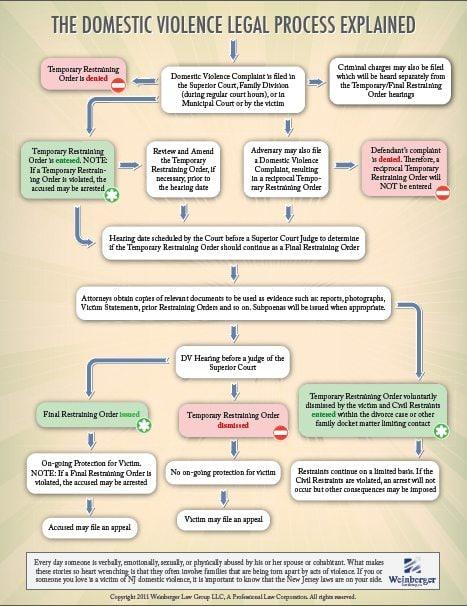Table of Contents
- Restraining Orders Reveal Gaps in Personal Security for Victims
- The Role of Stun Guns in Enhancing Self-Defense and Deterrence
- Legal and Safety Considerations for Stun Gun Ownership Among Restraining Order Holders
- Policy Recommendations to Improve Victim Protection Through Accessible Self-Defense Tools
- In Summary
Restraining Orders Reveal Gaps in Personal Security for Victims
Despite the legal protections that restraining orders offer, many victims still face significant personal security vulnerabilities. The enforcement of these orders often depends on rapid police response and the offender’s compliance, which is not guaranteed. This gap leaves victims exposed to ongoing threats, demonstrating the limitations of relying solely on legal measures for protection. The absence of immediate and tangible defense tools can exacerbate the sense of helplessness felt by those under threat.
Key concerns include:
- Delayed response times from law enforcement during critical moments
- Limited ability for victims to proactively protect themselves
- Insufficient real-time deterrents that can prevent escalation
In light of these challenges, the discussion around equipping victims with less-lethal self-defense devices, such as stun guns, is gaining momentum. These tools can offer an immediate, empowering layer of protection that legal orders alone cannot provide. Safeguarding personal security requires a comprehensive approach-combining legal measures with practical, accessible self-defense options.
The Role of Stun Guns in Enhancing Self-Defense and Deterrence
In the landscape of personal safety, stun guns have emerged as a pivotal tool for individuals seeking to empower themselves against potential threats. Their compact size, ease of use, and immediate non-lethal effect make them an effective form of self-defense that goes beyond traditional measures. For victims of harassment or abuse, particularly those under restraining orders, stun guns provide a reliable method to deter aggressors before situations escalate. This technology bridges the gap between passive defense and physical confrontation, offering a balance of security and control.
Key benefits of stun guns in self-defense situations include:
- Immediate incapacitation: Stun guns deliver an electric shock that temporarily disrupts muscle function, giving users precious seconds to escape.
- Non-lethal deterrence: Unlike firearms, stun guns disable without fatal consequences, making them a lawful and ethical option for many states.
- Enhanced confidence: Possession of such devices often boosts the user’s sense of security, which in itself can deter potential offenders.
- Legal support: In many jurisdictions, presenting a stun gun can reinforce the seriousness of a restraining order, underscoring the user’s commitment to personal safety.
Legal and Safety Considerations for Stun Gun Ownership Among Restraining Order Holders
Individuals holding restraining orders often face complex legal frameworks when considering self-defense tools like stun guns. While many jurisdictions permit possession, strict regulations may apply, including mandatory registration, restrictions on carrying in public, and specific prohibitions at sensitive locations such as schools or government buildings. Failure to comply can result in fines, confiscation of the device, or criminal charges, undermining the protection intended by the restraining order. Victims need to ensure they fully understand local laws and consult legal counsel to avoid inadvertent violations.
Safety protocols are equally crucial, as improper use or accidental discharge of stun guns can pose serious risks. Effective training is recommended to ensure responsible handling, minimize injury, and maximize the device’s deterrent potential. Victims should consider the following precautions when owning a stun gun:
- Store the stun gun securely and out of reach of children or unauthorized individuals.
- Carry the device in a manner consistent with legal guidelines to prevent misuse accusations.
- Familiarize themselves with stun gun operation and emergency response techniques.
- Regularly inspect the device for functionality to ensure reliability during critical moments.
Policy Recommendations to Improve Victim Protection Through Accessible Self-Defense Tools
To effectively bolster victim protection, legislation must evolve to ensure broader accessibility to self-defense tools like stun guns without compromising public safety. Policymakers should consider streamlining the permit process by reducing bureaucratic hurdles and offering expedited approval for individuals with documented restraining orders. Additionally, implementing mandatory safety training programs as part of the permit acquisition can empower victims with the knowledge to use these devices responsibly and effectively. Such targeted reforms will close existing gaps that leave vulnerable populations exposed despite legal protections.
Furthermore, synergy between law enforcement agencies and victim advocacy groups is essential to raise awareness and distribute self-defense resources appropriately. Governments should allocate funding to support community outreach initiatives that inform at-risk individuals about legal rights and the option of stun gun ownership as a supplementary safeguard. Ensuring that self-defense tools are integrated into victim protection strategies will create a more proactive environment where victims can regain control of their personal safety while legal processes, such as restraining orders, take effect.
In Summary
In conclusion, while restraining orders serve as a critical legal tool for protecting victims, their limitations underscore the urgent need for accessible self-defense options such as stun guns. As incidents of domestic violence and personal attacks continue to rise, empowering individuals with non-lethal means of protection can provide a crucial layer of security. Policymakers and advocacy groups must work together to ensure that victims not only have legal recourse but also practical defense tools to enhance their safety in moments of immediate threat.Check Our Other Blogs
- StunGun – Your Trusted Source for Stun Guns, Laws, and Self-Defense Tips
- PepperSprayLaws – Your Trusted Resource for Pepper Spray Information
- StunGunLaws – Your Trusted Guide to Stun Gun Legality and Safety





